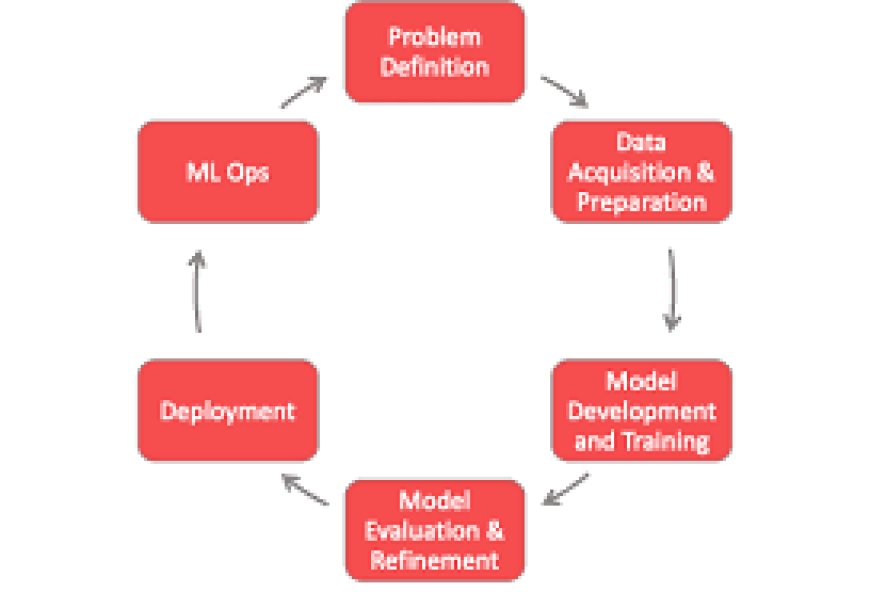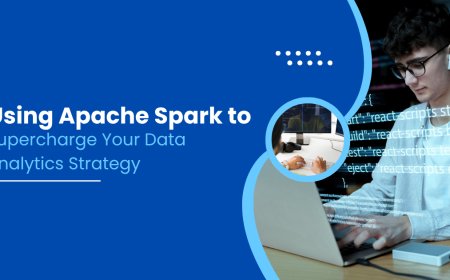From Data to Deployment: The Full Cycle of AI Development Services Explained
Discover the full AI development lifecycle, from data collection to deployment. Learn how AI development services transform raw data into powerful solutions, guiding businesses through problem definition, model building, and ongoing optimization in this comprehensive guide.

Artificial intelligence (AI) is transforming how companies work, innovate, and compete in the fast-moving business world. From anticipating future market change to automating complex processes, AI allows organizations to make data-driven decisions and provides access to new levels of opportunity.
But constructing an AI solution is no easy task - it involves a structured, end-to-end process of converting raw data into useful applications that leverage real-world insights. For those organizations that are just beginning their AI journey, articulating this path can help clear the mist surrounding AI development and show the value of expertise.
This blog articulates the whole life cycle of AI development, showcasing the full journey for our new clients who are looking to utilize the power of AI. Whether organizations are aiming for more efficient operations, better customer experiences, or creating new initiatives altogether, this blog provides clarity for every step of the AI project, and how AI development services are leading to success.
1. Problem Definition and Goal Setting
Every AI project starts with a strong and clear understanding of a problem to be solved. This phase includes working with stakeholders to clarify goals, define pain points, and determine goal states with measurable outcomes (e.g., reduce customer churn, automate repetitive tasks). By working to align the AI solution with business goals, teams ensure that the project adds meaningful value when complete. It is essential for teams to ask foundational questions at this phase such as, "What data do we have access to?" and "What does success look like?" A clear understanding of business goals and organizational context creates a solid foundation for the AI development process.
2. Data Collection and Preparation
Data is the lifeblood of AI. In this phase, teams identify and collect data from available sources such as databases, APIs, sensors, or user actions, but once again, often the data is not in a usable form- messy, incomplete, or inconsistent. This subject, known as data preparation, requires that the data is cleaned, normalized, and arranged and formatted for analysis. This may include deleting duplicate records, figuring out how to adjust for missing values, and defining the aspects of the data to adjust and transform into formats that machine learning models use. Ultimately, providing high-quality data feeds to models ensures the models will perform better making data preparation a key step for effective AI development services.
3. Exploratory Data Analysis
Once the data has been prepared, exploratory data analysis (EDA) will help reveal patterns, trends, and insights. Using both statistical methodologies and visualization tools, the team will be able to identify possible correlations, patterns, outliers and potential issues. For example, EDA could show that some data features drive customer behavior and therefore guide the model approach.In addition, EDA can help the team identify whether additional data is needed or whether some algorithms make more sense to use than others. EDA is the bridge between raw data and model development; it will ensure the team can make informed decisions.
4. Model Development
It is here that the magic of artificial intelligence actually happens. After understanding the problem and the available data, the team will now choose and create the machine learning models, whether classification, regression, clustering or another task, and develop the model. Depending on what they are trying to do, the team will decide on the algorithms to use, to build the models, for example decision tree, neural network, support vector machine etc.. At this phase, the data scientists will try different models, tune hyperparameters and test the performance. AI Development Services will shine at this point, because it will take the strengths of algorithm design and optimization to yield usable results.
5. Model Training and Validation
With a model developed, its time to train the model on the dataset that was prepared. For evaluation purposes, the data has to be split into training, validation and test datasets. Training is the process of using data to enable a model to learn about underlying patterns in the data and validation assesses if the model can generalize well on new data. Performance is measured using metrics such as accuracy, precision, recall, or F1-score, which let you know how well your model performed. Teams often maniacally re-train the model, tuning hyperparameters and analysing the outputs from the previous trained model, to determine if the model was overfitting or underfitting. Ideally this model evaluation stage ensures we have a model that is well-tuned, robust and production ready.
6. Testing and Evaluation
Before deploying the Jon, extensive testing of the model will also engage. This includes (1) running the model against the test dataset and (2) running the model in real-world scenarios (for example, running it against historical transactions) to ascertain how accurately it identify fraud. After testing is completed, stakeholders will review the results of the testing process to ensure the model is achieving all the objectives of the business. If there is an issue with the model, the team may revert back to earlier milestones and adjust the data, transform or tune parameters. Careful testing is critical to reducing the risk in the production instance of the model.
7. Deployment
After validation, the model is put into use in a production environment - either as an API delivered through a cloud protocol, an on-premise system, or perhaps an embedded system. During deployment, the model must be integrated with necessary systems, scalability must be established, and latency must be addressed. For example, a recommendation engine may be imbedded in the software, which must be thoroughly tested stated to provide real time recommendations. As part of this process, a company often engages AI development services to ensure the integration proceeds with minimal disruption.
8. Monitoring and Maintenance
Nevertheless, deployment is not the end of the process. The model must be monitored closely to see if it performs as predicted. One common problem is data drift, when input data change over time and negatively impacts the accuracy of model predictions. Routine updates, retraining, and sometimes re-design, need to be undertaken at the product manager's discretion. Maintenance of an AI solution may also involve other issues to address. Ethical issues may arise when for example, a model makes biased predictions, and ethical reviews and potential mitigation actions should be adhered to. Another issue of maintenance is ensuring that the AI model(s) continue to meet regulatory requirements. Monitoring routinely will keep the AI solution aligned with current business needs and the changing environment.
9. Iteration and Optimization
Most AI projects are iterative, and use feedback from the deployment and monitoring phases to sense where changes may be necessary. Improvement may involve updating the model parameters and running an optimized model, utilizing new input data, and asking new business questions that may be strategically advantageous. The iteration and refinement process should lead to an iterative AI solution.
Why AI Development Services Matter
AI development services make a relevant addition by offering end-to-end expertise, from problem definition to continuous improvement. These services combine technical proficiency with business acumen, ensuring AI solutions are tailored, scalable, and impactful. For new clients, partnering with experienced providers simplifies the complex AI lifecycle, delivering measurable results while mitigating risks.
Conclusion
The AI development lifecyclefrom defining the problem to deploying and maintaining a solutionis a structured yet dynamic process. Each phase, from data collection to iteration, builds toward a robust AI system that drives business value. By understanding this cycle, new clients can approach AI projects with confidence, knowing each step is designed to transform data into actionable outcomes. With the right AI development services, businesses can unlock the full potential of AI, turning vision into reality.




































